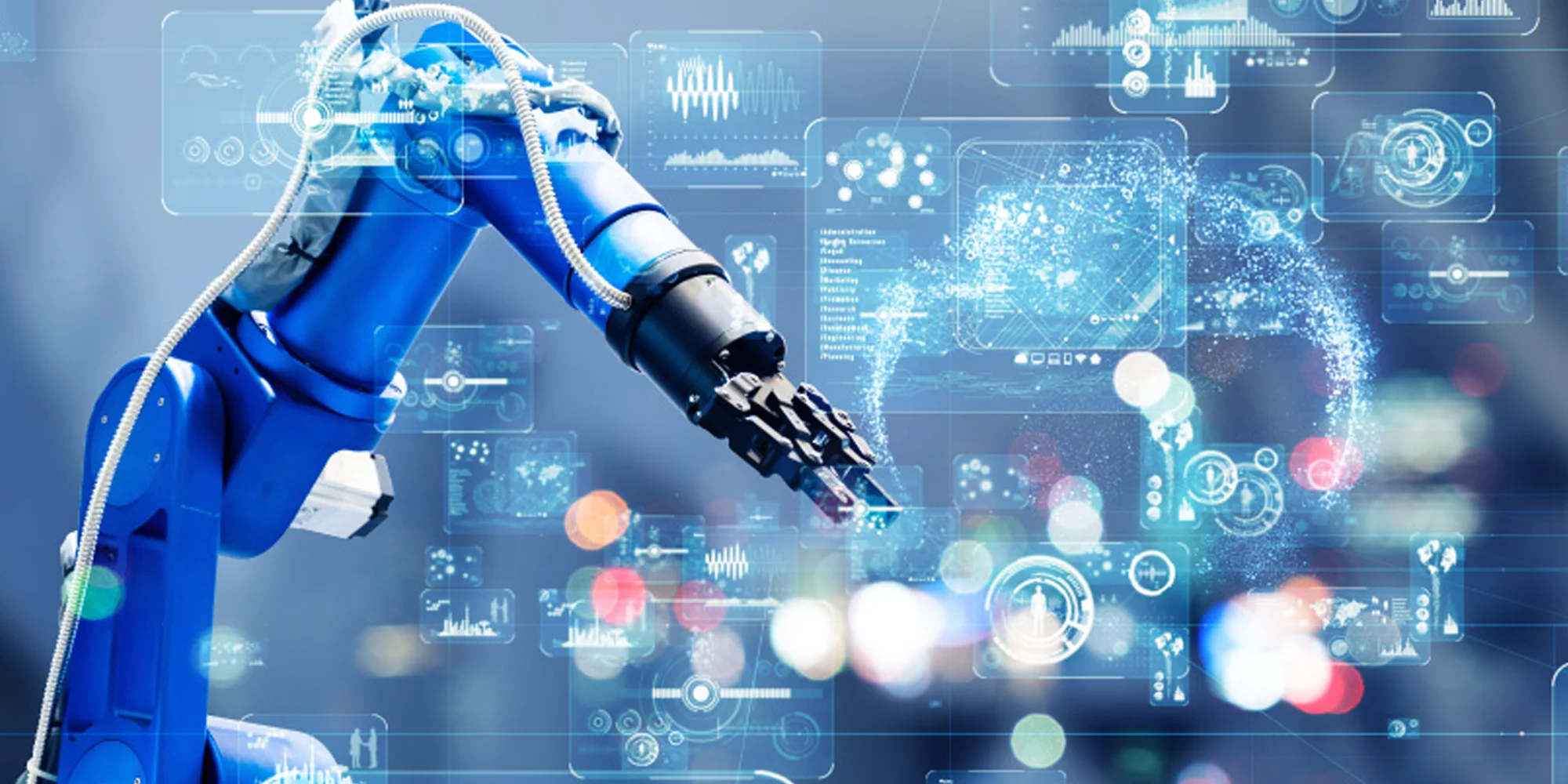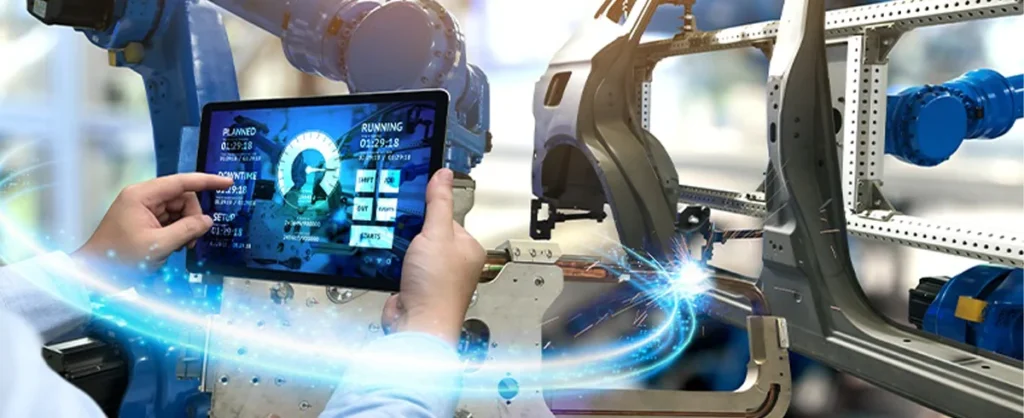Necessary Always Active
Necessary cookies are required to enable the basic features of this site, such as providing secure log-in or adjusting your consent preferences. These cookies do not store any personally identifiable data.
|
||||||
|
||||||
|
||||||
|

The rapid rise of next-gen technologies and their applications is transforming top industries in 2025. With advancements in cutting-edge solutions like artificial intelligence and blockchain, there have been significant improvements in how some industries operate. This development is because more businesses are adopting next-generation solutions, which brings the future of technology closer to the present reality. This article explores next-gen technologies to watch out for in 2025 and their top industrial applications.
Next-gen technologies are the latest advancements in digital innovation, reshaping industries through greater efficiency, automation, and connectivity. Unlike traditional technologies, these next-generation solutions are designed to handle complex tasks with higher accuracy and speed. For example, an AI-powered data analysis system that processes vast amounts of information in real time. We also have faster device-to-device connections, enabled by the Internet of Things (IoT), 5G, and the emerging 6G technology.
Check out the leading technologies that are reshaping our industries with features such as automation, decentralized platforms, supercomputing speeds, and immersive digital environments:
Artificial intelligence (AI) and machine learning (ML) are next-gen technologies reshaping popular industries through task automation, assistance with decision-making, and improved efficiency. A good example is predictive analytics for fleet management that involves AI and machine learning algorithms for faster data processing support.
As a next-gen technology, blockchain is valued for its secure, decentralized, and tamper-proof applications, particularly in decentralized finance (DeFi) within the banking sector. By eliminating intermediaries, it ensures faster peer-to-peer transactions, reduced costs, and greater transparency.
Beyond financial applications, blockchain serves as the foundation of Web3, marking the next evolution of the internet. Unlike Web 2.0, where major corporations like Meta, Amazon, and Google dominate, Web3 shifts control to users. This transition is powered by smart contracts, decentralized applications (dApps), non-fungible tokens (NFTs), and decentralized autonomous organizations (DAOs).
The evolution of the 5G mobile communication network from previous 2G, 3G, and 4G technologies supports IoT applications because of its low latency and high bandwidth. It allows faster downloads, better online streaming, and video conferencing.
Edge computing complements 5G by processing data closer to the users rather than communicating with distant cloud servers. Through local data processing, edge computing minimizes latency, improves security, responsiveness, and reduces bandwidth usage to enable real-time applications of industrial automation, smart grid, and autonomous vehicles.
Extended reality (XR) encompasses augmented reality (AR), virtual reality (VR), and mixed reality (MR). XR as next-gen technologies transform how we interact with digital and physical environments to serve as a foundation for the metaverse. Augmented reality (AR) overlays digital information onto the real world using sensors in AR glasses and smartphones that update digital elements with each user interaction.
Virtual reality (VR) differs from AR by creating a fully immersive, computer-generated 3D environment rather than enhancing the real world. Users engage with VR through visual, auditory, and haptic feedback using headsets like Apple Vision Pro and Meta Quest 3. The blend of AR and VR is mixed reality that integrates virtual objects into the real world as if they naturally exist within the environment.
Quantum computing is still in its early stages, and it is a next-generation technology that adopts the principles of quantum mechanics to solve problems far beyond the capabilities of classical computers. Unlike traditional computing where bits are 0 or 1, qubits can exist in multiple states; either simultaneously, in a superposition, or becoming entangled to allow a wide range of complex computations. Quantum computing promises more powerful AI algorithms and machine learning processes that could see applications in multidisciplinary fields with advanced computational power.

The applications of new emerging technologies can drive automation, efficiency, and continuous innovation in the following industries:
Applications of next-generation technologies in the healthcare industry include AI and machine learning for drug discovery, diagnostics, and personalized treatment plans. Medical personnel now detect diseases faster with AI-powered imaging tools, and surgeries are more precise with robotic aids. 5G also powers telemedicine to allow real-time consultations, while wearable devices with IoT monitoring systems ensure proactive treatments. Quantum computing accelerates simulated molecular interactions for faster research as blockchain helps secure patients’ data.
Blockchain technology and AI applications in the finance and banking industry help to reduce fraud, tighten security measures, and automate transactions through smart contracts. AI in customer success through chatbots improves personalized financial interactions, while decentralized finance (DeFi) on blockchain tech provides a seamless and transparent alternative to traditional banking. Quantum computing is improving risk assessments, fraud detection, and predictive analysis of large financial datasets at very high speeds. We can also expect quantum encryption to reshape cybersecurity in accounting practices.
Efficiency in the supply chain and manufacturing industries can be optimized through artificial intelligence, the Internet of Things (IoT), and blockchain technology. AI helps with automation to reduce downtime and enhance productivity. Similarly, IoT in supply chain supports real-time tracking of goods for better inventory management. Transparency in the supply chain process is improved through blockchain, while complex logistics are optimized through quantum computing.
Next-gen technologies in the retail and e-commerce industry leverage artificial intelligence to personalize shopping experiences with automated warehouses and drone deliveries to improve logistics. Augmented reality has significantly improved online shopping with the virtual try-on feature as AI customer support enhances response times. Challenges with predicting future demand of goods are expected to be resolved with advancements in quantum computing through consumer behavior datasets.
Hybrid learning transforms education in schools and corporate organizations through AI and extended reality (XR). We have adaptive learning platforms that support personalized learning and special needs students. There are also virtual reality classrooms for immersive learning experiences, while the future of hybrid learning through key next-gen technologies can see fully automated administrative tasks.
The following are growing concerns about the proper implementation of new emerging technologies and balance with existing workflow methods:
Next-gen technologies like artificial intelligence and machine learning process large amounts of consumers’ sensitive data. Companies adopting these advancements must ensure strong cybersecurity measures and data protection strategies to prevent loss or misuse of confidential information.
AI-powered systems can now make crucial human-like decisions in aspects like hiring, finance, and technology. It is important to continually review policies guiding fairness, transparency, and accountability in AI algorithms.
Upskilling and versatility have never been more important for employees in leading industries today. Using AI and robotics to automate repetitive tasks and complex roles may make some traditional jobs redundant.
The continuous adoption of next-gen technologies will continue to redefine innovation and productivity in industries. Despite recent technological trends, we can expect smarter automations and highly connected ecosystems powered by quantum computing, AI and machine learning, extended reality, blockchain, 5G, and edge computing. Businesses must also embrace these advancements to remain competitive or risk struggling to keep up in a fast-paced technological environment. However, balance is key and important to ensure the sustainability and security of sensitive information.
Sign up to receive our newsletter featuring the latest tech trends, in-depth articles, and exclusive insights. Stay ahead of the curve!